Grammar ( 2 ) CH10 L15 Passive forms of the Perfect Tenses (7) YouTube

Perfect System Passive Verbs YouTube
How to use the present perfect continuous tense. You can also combine the present perfect tense with the present continuous tense to show an ongoing action that started in the past and continues to the present. This hybrid tense is called the present perfect continuous tense.The construction is similar to using the present perfect tense in the passive voice, except that the main verb uses the.
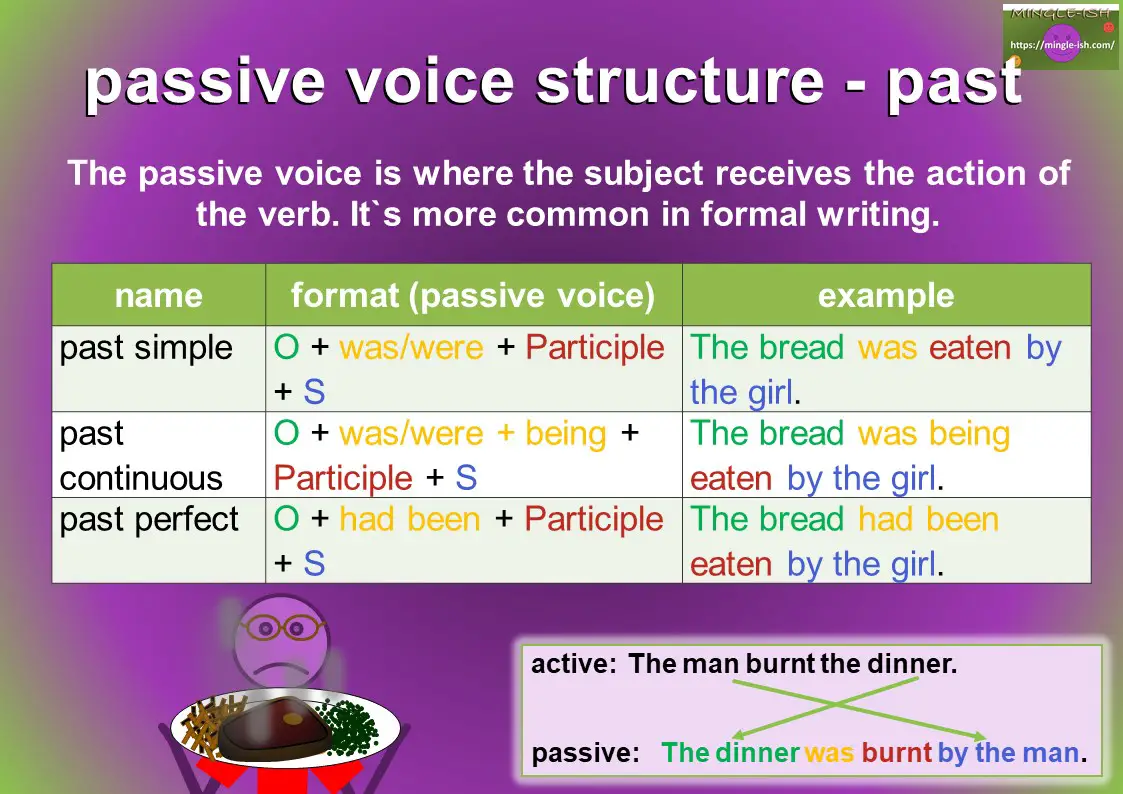
Passive voice definition and examples Mingleish
1. What is the Passive Form Present Perfect tense? Present Perfect Passive form: (has / have + been + past participle) e.g. >> has been told, have been made, has been taken, etc. 2. When to use the Present Perfect (Passive form) - Example Situation - We use the Passive form in the following situations: i. we want to focus on the result of an action and (not the person / thing doing the action.

Using the English Passive Voice with Different Tenses ESLBUZZ
Passive voice: A lot of people have been fired this year (by the company). Active voice: I have ordered food for everyone in the room. Passive voice: Food has been ordered for everyone in the room (by me). Active voice: Mangesh has bought a car recently. Passive voice: A car has been bought recently (by Mangesh).
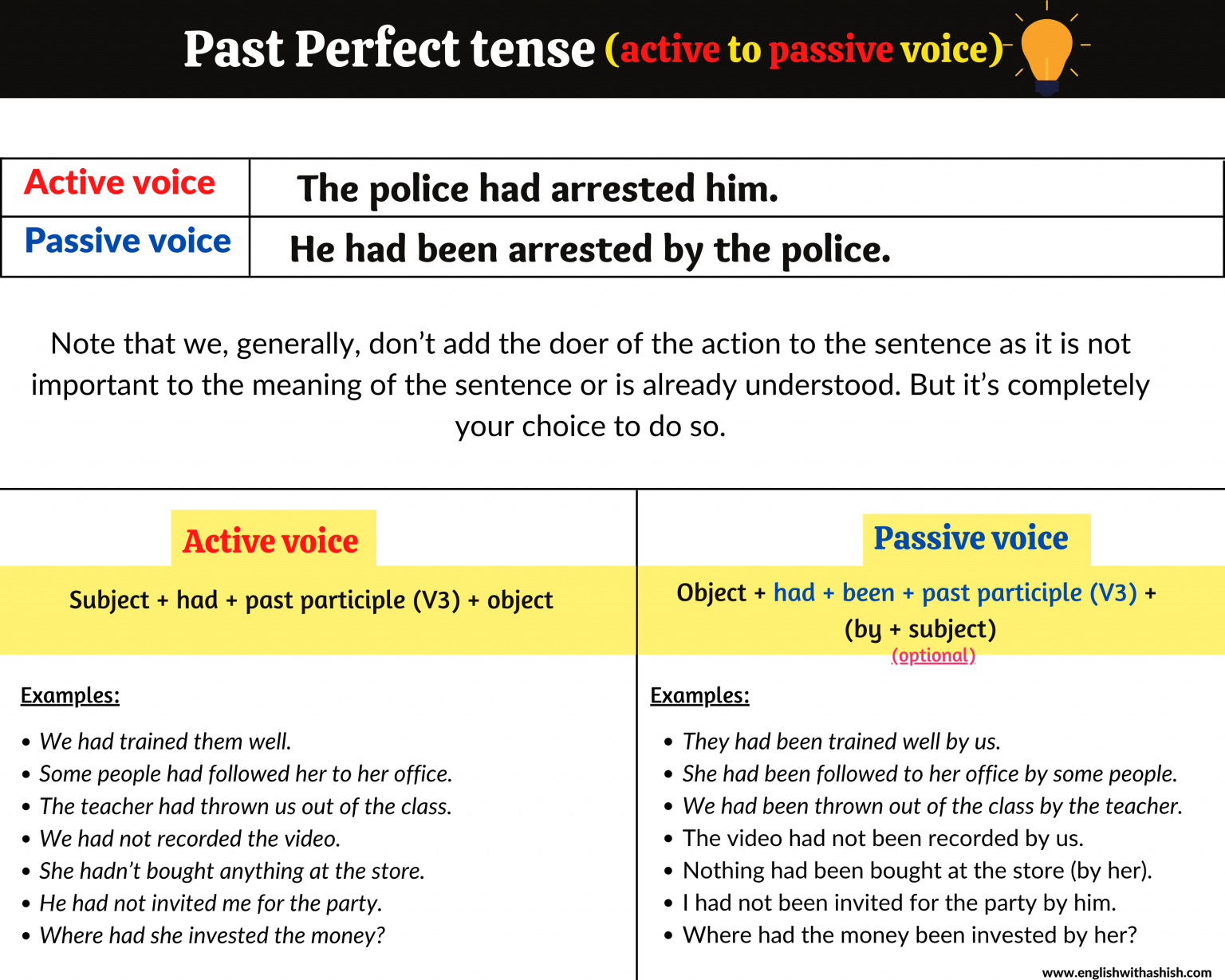
Active to Passive voice in the Past Perfect tense
ACTIVE: People have collected the goods. PASSIVE: The goods have been collected. We use the present perfect in the passive form for all the same reasons we use it in the active form - to talk about recent actions, experiences, and ongoing actions/situations. In the present perfect form with the passive, we always use 'has/have been' + the.
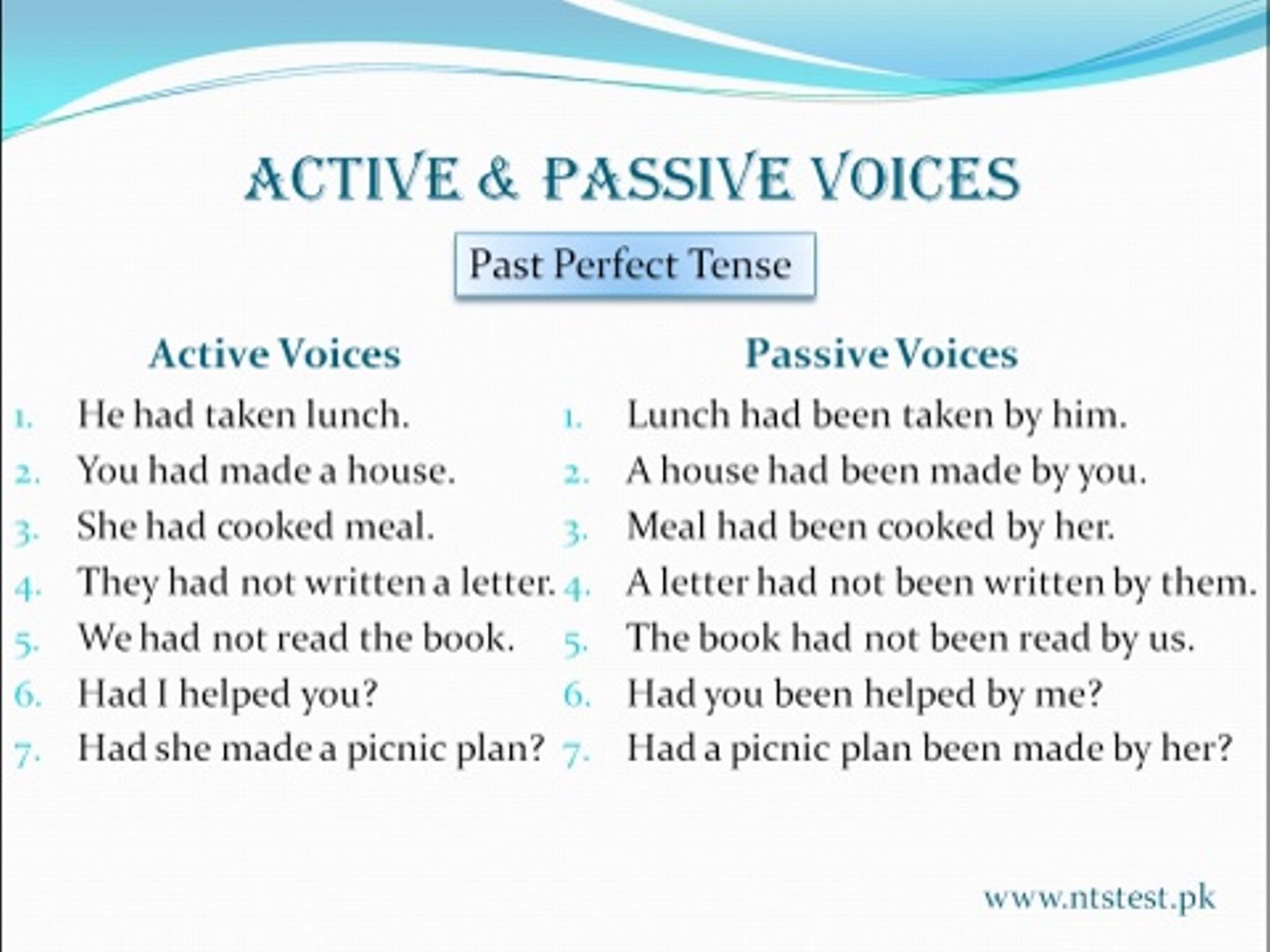
My English Task 💞 Past Perfect Tense
The passive voice in English grammar allows us to make the recipient of the action the focus of the sentence; the person or thing performing the action is unknown, unimportant or obvious. The passive is formed as follows: form of be + past participle. Learn the difference between the active and passive voice with Lingolia, then put your.
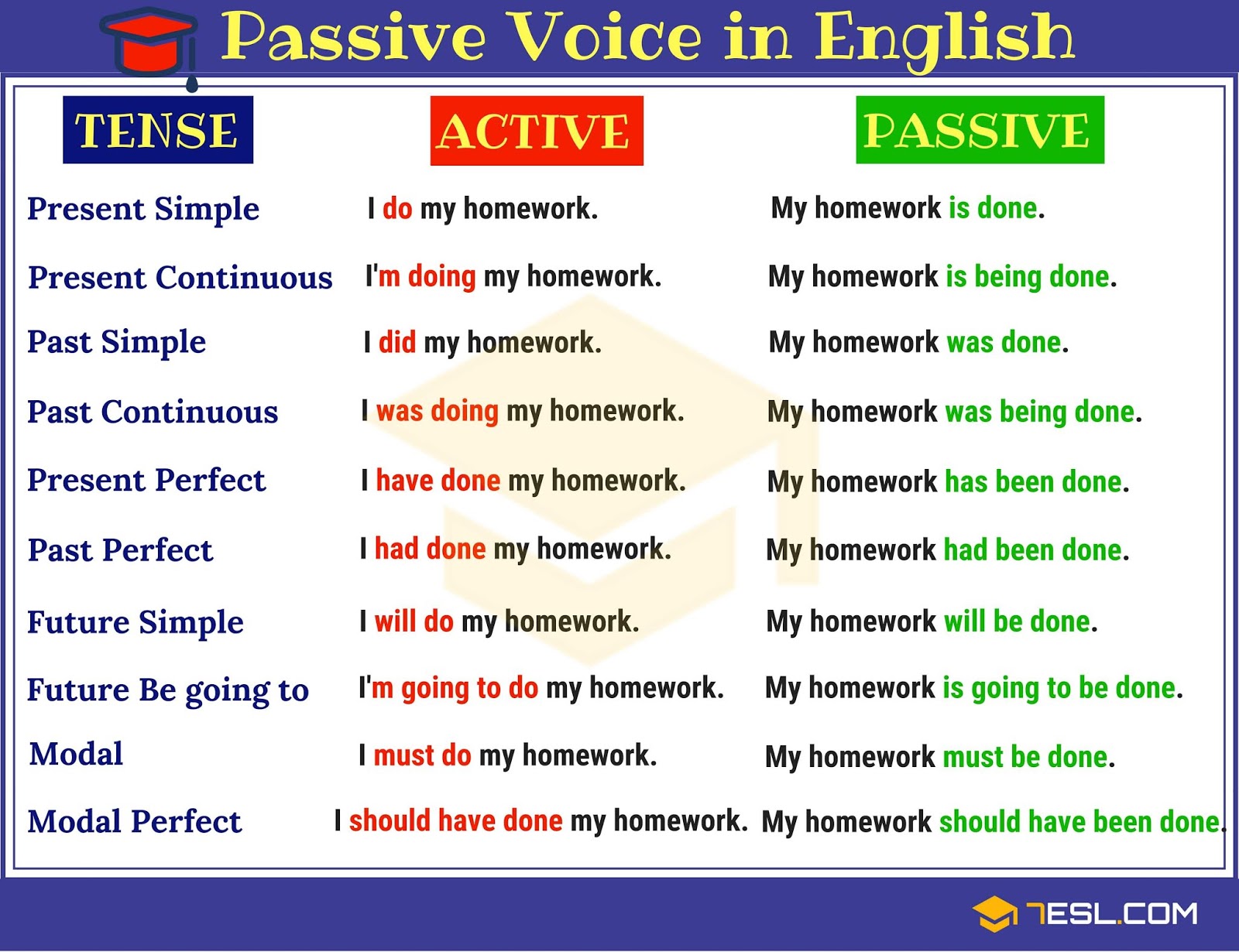
Modal verbs in passive voice exercises vsasm
Review how to make the passive here. Review irregular past participles here. Here's a list of exercises for practice with the passive. Present Simple Exercise (intermediate) Past Simple Exercise (intermediate) Present Perfect Exercise (intermediate) Future Simple Exercise (intermediate) Mixed Tense Exercise (difficult)

Passive voice present perfect tense Flapy English
In addition, click Active and Passive Voice Complete Rules, you might find this useful too. Active and Passive Voice of Present Perfect Tense. Affirmatives. Active: S + have/has + V3 + object + ROTS He has written a poem. Passive: S + have/has + been + V3 + prep + object + ROTS A poem has been written by him. Interrogatives
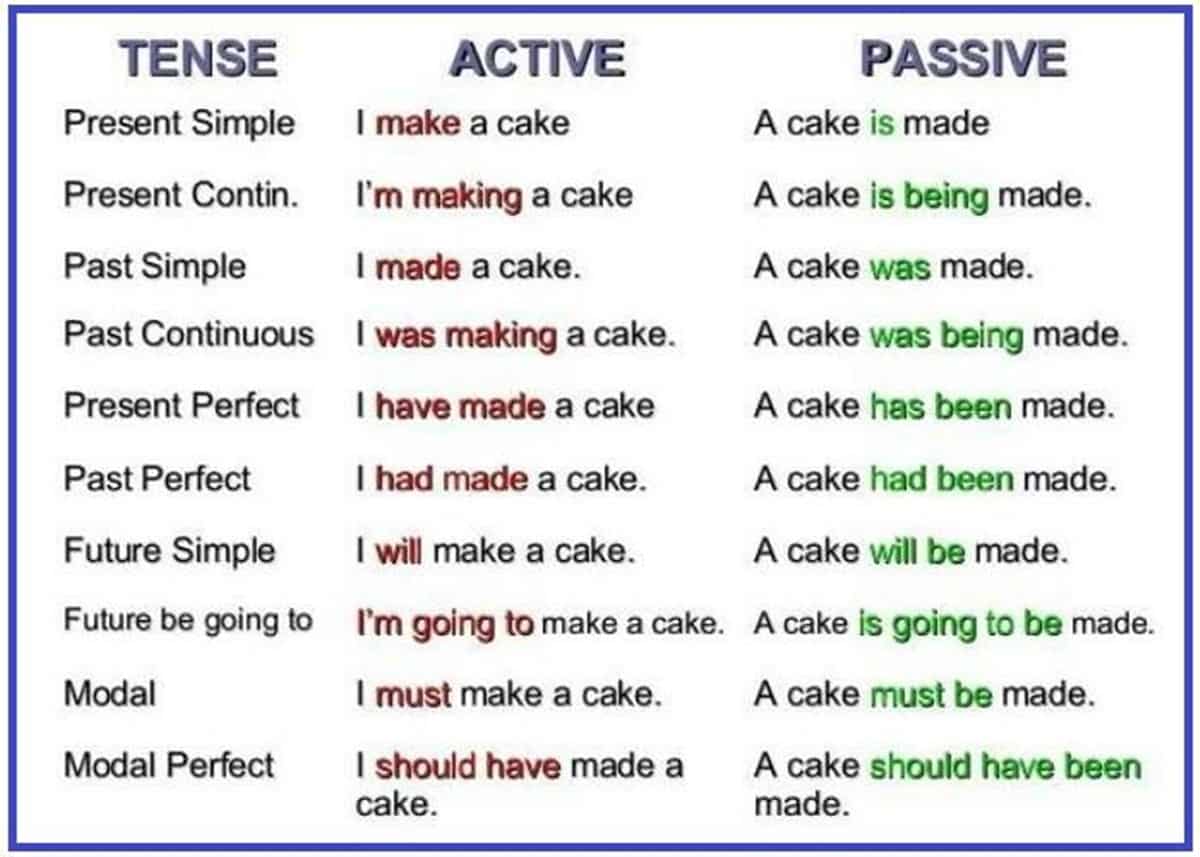
The Passive Voice Important Rules and Examples ESLBUZZ
Passive voice exercise (present perfect tense) September 27, 2015 -. In the present perfect tense we make passive verb forms by putting has/have + been before the past participle form of the verb. Sentences are given in the active voice. Change them into the passive.

FULL GUIDE Present Perfect Passive [2020]
Passive: We hadn't been helped at all (by Sam). Active: We had not recorded the video. Passive: The video had not been recorded (by us). Active: She hadn't bought anything at the store. Passive: Nothing had been bought at the store (by her). NOTE: If ' anything ' is the object of the verb in the active voice of a negative sentence, it.
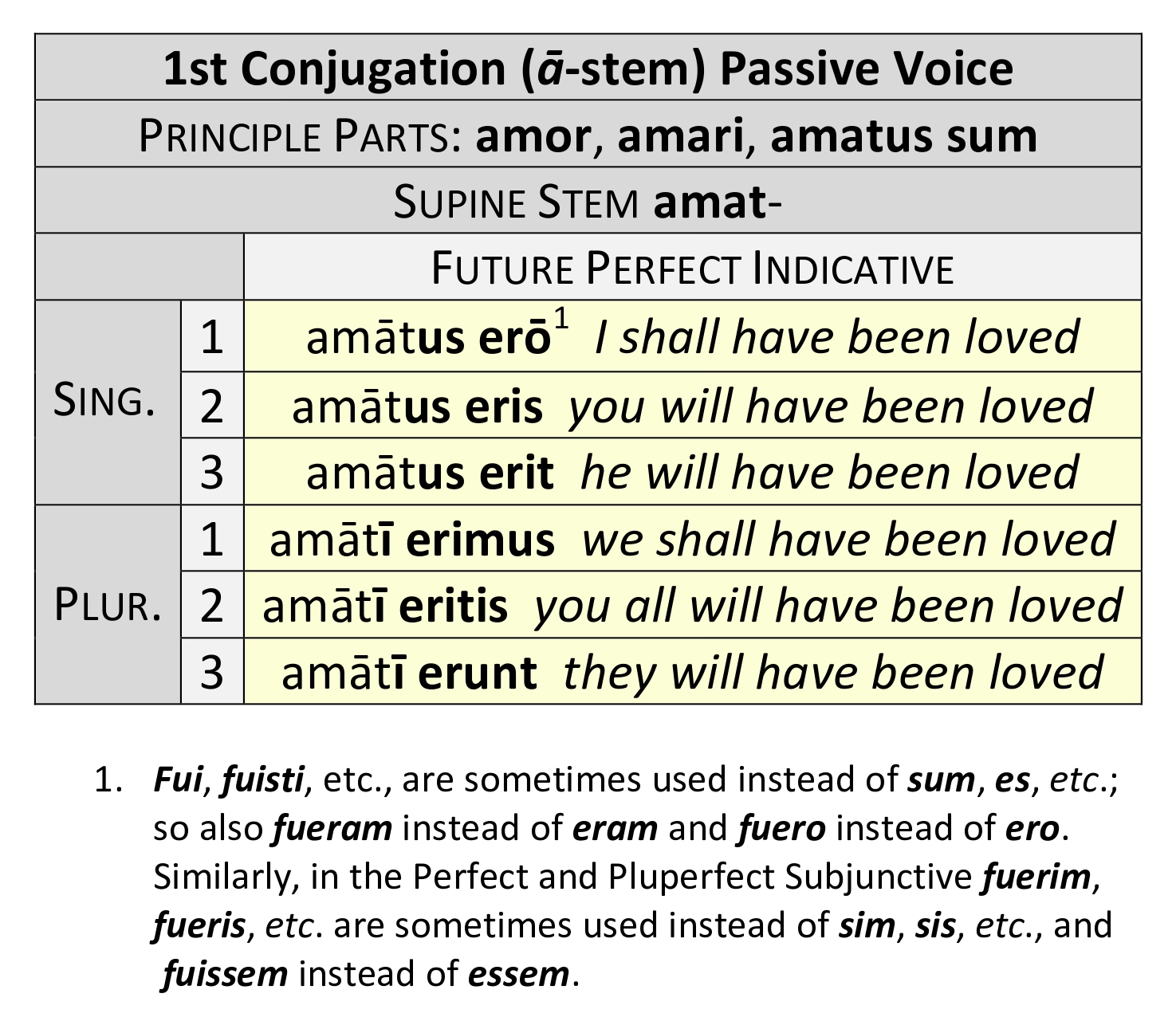
1st Conjugation Future Perfect Passive Dickinson College Commentaries
Present Progressive (verbs ending in -ing) Active: Passive: A combination of wind, pressure, and moisture is forming the thunderstorm. A thunderstorm is being formed. In the active example of present progressive tense, the factors of the storm are emphasized rather than the storm itself. In the passive example of present progressive tense, the.

Using the Passive Voice with Different Tenses ESL Buzz
The present perfect passive is periphrastic, which means consisting of a "phrase of two or more words that perform a single grammatical function that would otherwise be expressed by the inflection of a single word.". The present perfect passive is formed by a present tense form of the verb have plus the past participle been followed by a.
Perfect Passive Tense Interactive Worksheet by Christine Meyer Wizer.me
The present perfect continuous in the passive voice 'has been being achieved' is used here to show that the subject is not important. Is now threatening the local people. Here, the present continuous 'is now threatening' is used to show a state. We can use the present continuous or the present simple to talk about permanent or temporary.
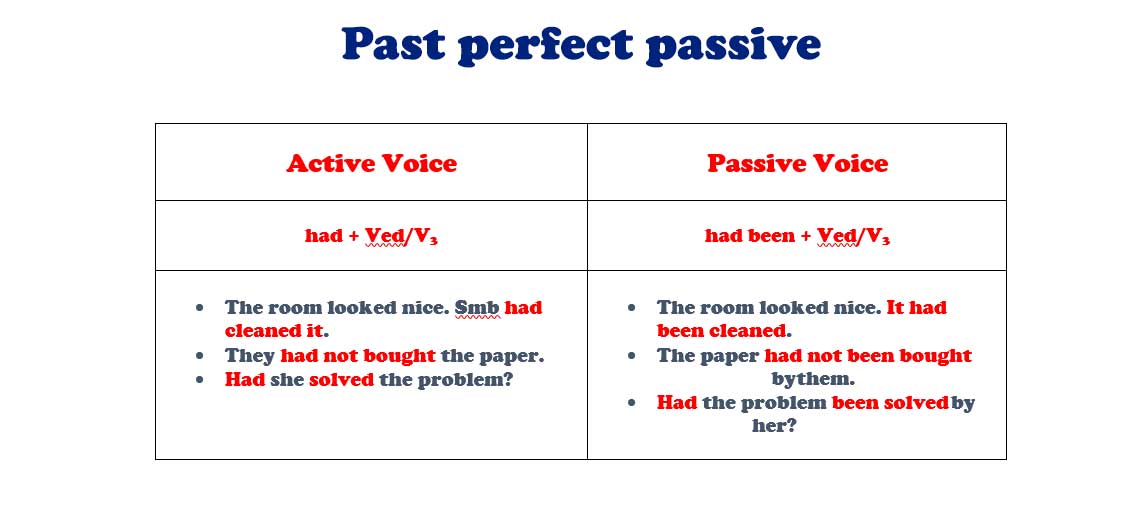
Past Perfect Passive как образуется
Passive: forms - English Grammar Today - a reference to written and spoken English grammar and usage - Cambridge Dictionary
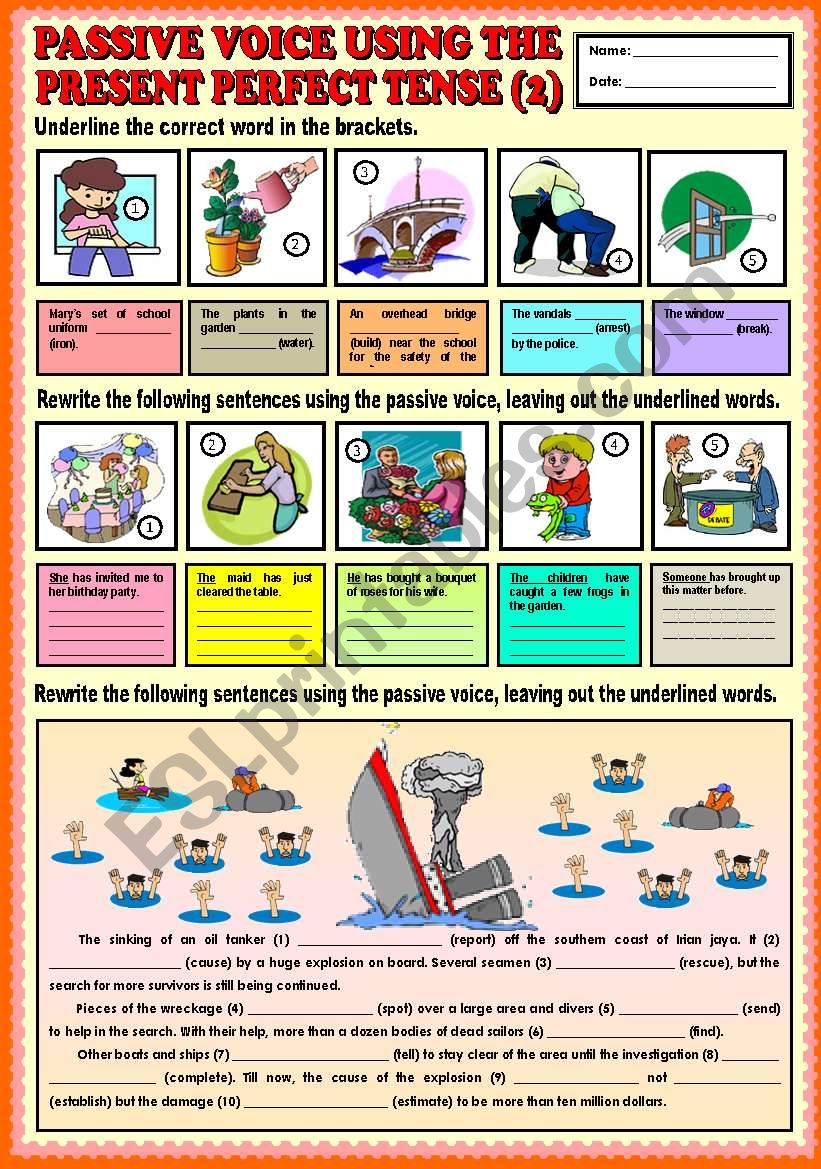
Passive voice using the present perfect tense part 2 + KEY ESL worksheet by Ayrin
The Formula for Present Perfect Tense Passive Voice. To convert a sentence from the present perfect tense active voice to the present perfect tense passive voice, follow this formula: Subject + has/have + been + past participle (3rd form) of the main verb + by + agent (if necessary) Examples: Active Voice: She has written three novels. Passive.
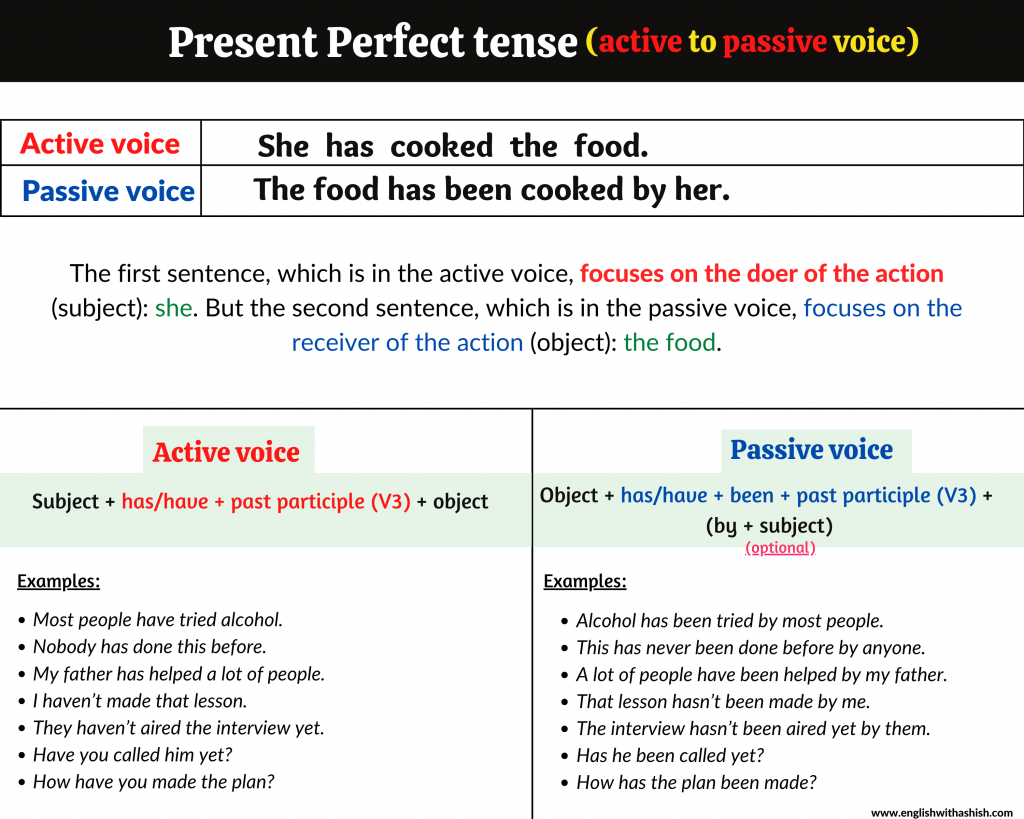
Active voice to passive voice in Present perfect tense examples and practice set
Forming Present Perfect Passive. Affirmative Form. Object + have / has + been + verb3 (past participle) Question Form. Have / has + object + been + verb3 (past participle) Something has been done by someone at sometime up to now. Active : They have cleaned the clinic. Passive: The clinic has been cleaned by them.

Using the English Passive Voice with Different Tenses ESLBUZZ
Positive and Negative Passive Questions in Present Perfect Continuous. As we learned above in this article, the formulas for present perfect continuous passive questions are Have/Has + subject + been + being + past participle of the main verb (V3) + by + agent (optional) and Have/Has + subject + not + been + being + past participle of the main verb (V3) + by + agent (optional).